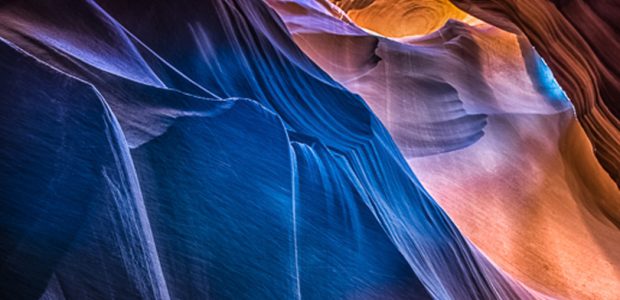Critique Submissions
This page contains selected December 2001 submissions from photographers who wished to have their photographs reviewed by the publisher of this site,Michael Reichmann, as well as by other readers on ourDiscussion Forum.
The winner this month’s contest and a free issue of theVideo JournalisAttila Kirjak.
For details on how to submit a photograph for critique please see theCritique / Contestpage.
Attila Kirjak
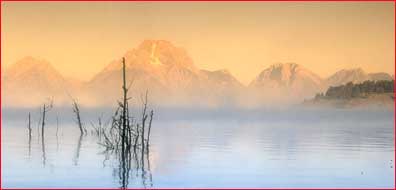
Attila Kirjak
New York City.
http://kibo-studio.com/kiru
Grand Teton NP at Signal Mountain on a misty September morning. You might or might not critique this photo, I for one I think it was worth to get up early that morning. Technical details: Canon 50mm 1.8 @ f8, 1/10 two frames stitched wit PowerStitch, Provia 100F, tripod, MLU.
Michael’s Critique
I agree completely with Attila. It definitely was worth getting up early. The light is exquisite and the composition of the frame does a wonderful job of capturing the feel of a mountain lake at dawn. A lovely image.
You can add your own comments on Atilla’s photograph on the Critique section of ourDiscussion Forum.
Bruce Scorsone
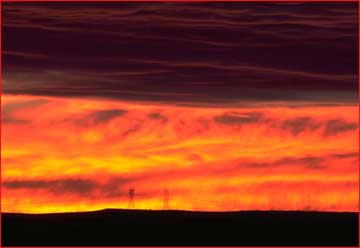
Bruce Scorsone
Saginaw MI. USA
I used a Nikon 8008S W/ 28mm lens, no filters.
I was attending a workshop near Page AZ. We had been in a slot canyon during the middle of the day. (this was in November, 1997). We came out of the slot in the evening to witness this sunset. Often the best images are not planned.
Michael’s Critique
Appealing sunset’s and sunrises are just that‚ appealing. But they need to have an additional element for a strong photograph to result. Otherwise they become what I call J.A.P.S‚ Just Another Pretty Sunset.
The hydro poles that can just be seen in this frame could have been such an element. If taken with a longer lens they could have been made part of a strong vertical composition.
You can add your own comments on Bruce’s photograph on the Critique section of ourDiscussion Forum.
Scott F. Turner
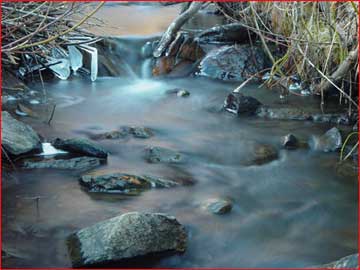
Scott F. Turner 1920 Hawthorne Ave Grand Junction, CO 81506 USAfixyrpc@hotmail.com Sony DSC-F707 Polorizing Filter, Warming Filter 2 sec exposure @ F8.0 The original was shot as a 14mb Raw Tif.
Michael’s Critique
The long exposure gives a creamy and dreamlike feel to the water, and the iridescent colour is certainly appealing, but I feel that not enough attention has been paid to the composition. The dead branches in the upper left and right are a distraction and add nothing to the composition. Photographers have to sweat the details and discard everything that isn’t an appropriate part of the frame.
You can add your own comments on Scott’s photograph on the Critique section of ourDiscussion Forum.
Claudine Anderson
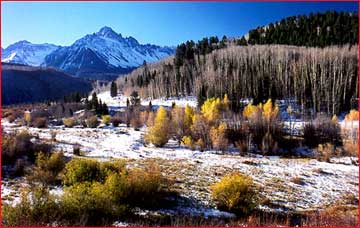
Claudine Anderson
Montrose CO USA
western_co@yahoo.com
CanonA1. 35mm lens. F13aperaturepriority. Kodakgold100. Polarizer. HP4300 scan from photo.
This valley floor had a bit of everything, along with fresh snow. A few of the lower aspens still had their leaves. Mt Sneffles (14,410Ã) is visible in the background. I usually shoot simplified landscapes, so this is a departure from myƒ«comfort zoneÃ. Hopefully, it is not too cluttered.
East Fork of Dallas Creek . Ridgway CO. Oct 2001ı early morning.
Michael’s Critique
Unfortunately, as Claudine supposes, itistoo cluttered. All of the right components for a strong landscape image are there, except there is no center of interest. The eye flits around not knowing where land. Simplification and extraction are the keys to successful landscape photography.
You can add your own comments on Claudine’s photograph on the Critique section of ourDiscussion Forum.
Patrick Campbell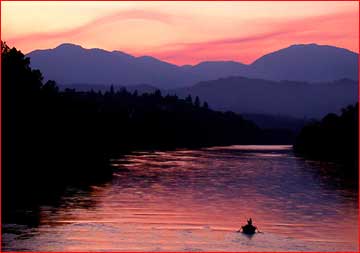
Patrick Campbell
Redding, CA
Nikon Coolpix995
drsoup@pacbell.net
This was taken on a bridge that spans the Sacramento River in Redding, CA. The fisherman happened to be in a nice spot. I used a tripod. Shutter speed 1/15 second, f 3.1, ISO 100 setting, daylight white balance. Some minor manipulation in Photoshop 6.0 to improve the color saturation and sharpness. The clouds are actually haze from controlled burns that were being done just before the rains began. Taken early November, 2001.
Michael’s Critique
Lovely light and a well place foreground help make this an appealing image. I’m including it here because in helps illustrate the comment I made regarding Bruce Scorsone’s entry a few places above. There needs to be something to catch and hold ones interest besides a pretty sky.
You can add your own comments on Patrick’s photograph on the Critique section of ourDiscussion Forum.
Clayton Mansnerus
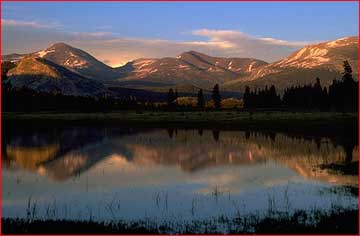
Clayton Mansnerus
Santa Cruz, CA. USA
clayton@cruzio.com
http://members.cruzio.com/~clayton
Technical data: Pentax K-1000 35 mm camera, Sigma 28-70 mm lens, Fuji Provia 100
Photo of Lembert Dome, Mt. Dana, and Mt. Gibbs taken from Toulumne Meadows in Yosemite National Park, CA. In June of 2000 the meadows were swarming with hungry mosquitos but I couldnÃt resist this scene. Indulging my photographic urges cost me at least one hundred mosquito bites. It was an itchy night back at camp.
Michael’s Critique
The mosquitoes are long gone but Clayton’s image endures. A beautiful locale well seen and captured. It really deserves to be seen in a big print. The inclusion of the foreground grasses adds a nice sense of depth.
You can add your own comments on Clayton’s photograph on the Critique section of ourDiscussion Forum.
Jeffrey Goggin
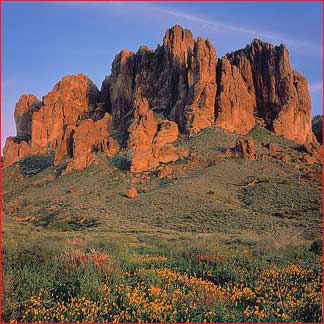
Jeffrey Goggin
Scottsdale, AZ USA
audidudi@mindspring.com
Captured with a Minolta Autocord LMX using Fuji Provia 100F film. Subsequently scanned with a Minolta Scan-Multi using Vuescan software and (minimally) processed in Photoshop 6.0. This was intended to be the middle frame of a three-panel panorama but I think it works well on its own and I could never get the other frames to line up properly in any event. Taken at the Lost Dutchman State Park east of Phoenix, Arizona earlier this year and exposed right at sunset (note that the shadows are running uphill!). While the vivid colors may look over saturated to those who’ve never seen an Arizona sunset, they match the image on the film quite closely (and Yes, this image was a bear to scan and process; this was my eleventh attempt at it and the first time I’ve achieved what I consider to be an acceptable result).
Michael’s Critique
I like this photograph a great deal. As Jeffrey points out, the colour seems over-the-top, but that’s the way it can be in the desert southwest. Because it’s a square there’s something restful about the composition. I feel that a large print would be something one could look at for a long time. Put one over the mantelpiece Jeffrey.
You can add your own comments on Jeffrey’s photograph on the Critique section of ourDiscussion Forum.
Jason Larson
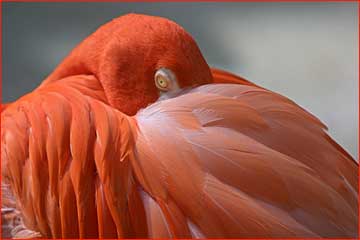
Jason Larson Gainesville, Floridajlarson@shadowplayphoto.com Canon D30 Sigma 70-200 f2.8 EX HSM w/ 2x Teleconverter @ 350mm 1/350 sec @ f5.6 ISO 100 Flamingoes are such great birds to photograph. Their color can vary dramatically from a very subtle pink to nearly red. I had the opportunity to shot some close up at Silver Springs here in Florida. This one wanted to doze, but several others were causing a raucous nearby and this one looked over with a baleful gaze.
Michael’s Critique
In addition to the strong graphic nature of this photograph I’m attracted to detail and texture of the feathers. I might have cropped the left side by 10% to clean it up a bit and make the composition tighter.
You can add your own comments on Jason’s photograph on the Critique section of ourDiscussion Forum.
Andrzej Poniatowski
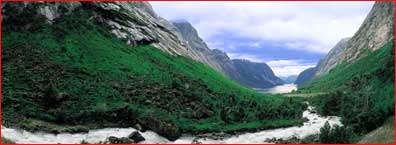
Andrzej Poniatowski Ornskoldsvik, Swedenaudiomix@city.ornskoldsvik.com This image was taken with my Nobelx 135 S Panorama Camera, on Fuji Velvia (exposure details unrecorded – probably f/8 in A priority mode, with the Panolux Controller) Some levels and saturation were applied in Photoshop – not much! Location – middle west Norway, a couple of miles from the town Trondheim, in July this year. I find Norwegain landscapes fascinating! This is a valley I "discovered" during one of my many phototrips there – there must be some Trolls hidden somewhere, for sure!
Michael’s Critique
Great location and an appropriate tool for this type of scene in the Noblex, but unfortunately the framing leaves a lot to be desired. Cropping the river that tightly is disconcerting, and the large expanse of featureless green on the hillside does little for the composition.
You can add your own comments on Andrzej’s photograph on the Critique section of ourDiscussion Forum.
Geoff Eldridge
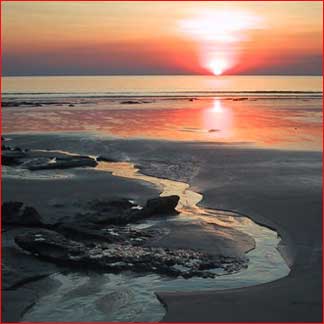
Geoff Eldridge
Sydney/Australia
geoff@elj.com
Canon IXUS
This photo was taken in late May 2001 on Broome’s Cable Beach in the North West of Western Australia. The tide differences are quite extreme, up to 8 to 10 metres and I was lucky enough to be there for a low tide near sunset. The sky has a lot of material associated with burning off in the Kimberley area to the east of Broome and as such most sunsets can be viewed with the naked eye. The lowering tide exposes 100’s of metres of sand and rocks and many little rivers flow for the few hours they exist. The sections of sand closer to the Indian Ocean were still wet and provided beautiful reflections of the sun when in the right position. I cropped this image to a square format as I am investigating a move to medium format and it seems to work for the image.
Michael’s Critique
A lot of the right ingredients are present, but I disagree about the square format working for this image. The flow (visual as well as the water) is vertical, and going with the flow would help. Also, the burned-out sun and surrounding sky strongly detract. The use of a graduated ND filter would likely have saved the day.
You can add your own comments on Geoff’s photograph on the Critique section of ourDiscussion Forum.
Collin Orthner
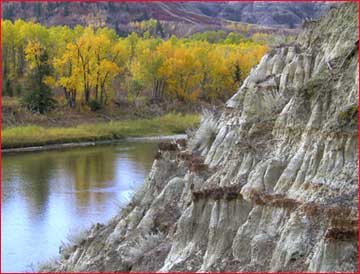
Collin Orthner Red Deer, Canadacorthner@shaw.ca
Dry Island Buffalo Jump Provincial Park in southern Alberta.
Michael’s Critique
A photograph like this relies heavily on detail and texture. Collin doesn’t say what format he used, but I feel that if this had been shot in medium or large format it would be enjoyable to see in a large print.
Beyond that, I find it hard to get excited about. The composition is nicely handled‚ though a bit less of the foreground cliff wouldn’t hurt. The photograph shows me the location but doesn’t move me in any way.
You can add your own comments on Collin’s photograph on the Critique section of ourDiscussion Forum.
Thomas Nash
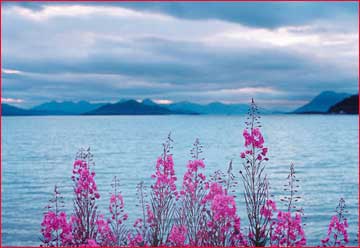
Thomas Nash
Warrenville, IL, USA
tomnash@ameritech.net
Nikon F5, 50 mm Nikon f1.4 lens, Provia 100F, 1/15s @ f8 (approx). This is not a composite.
Fireweed at Lake Aleknagik, Alaska, late evening, August 2001.
Michael’s Critique
Sometimes the elements for a strong image are there, but they just don’t come together. In this instance one of the reasons is that the light is just too flat and uninteresting. There’s an old saying that "the apprentice photographs the subject‚ the master photographs the light". In better light and with more interesting framing this could have sung.
The horizon line through the center of the frame is less than complimentary to a strong composition, and the fact that the mountains and sky are beyond the depth of field makes them detract rather than add to the image’s appeal.
You can add your own comments on Thomas’ photograph on the Critique section of ourDiscussion Forum.
Jed Buchwald
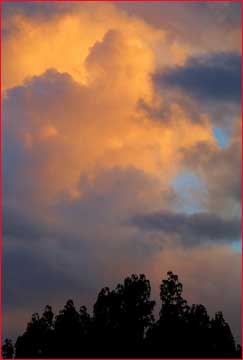
Jed Buchwald
Altadena, CA
buchwald@hss.caltech.edu
Canon G2
Taken at sunset early december in the hills overlooking Los Angeles.
Michael’s Critique
Sometimes all it takes is a good eye. Jed has nicely captured the drama of the clouds, and has given us a frame of reference by including the trees in silhouette.
You can add your own comments on Jed’s photograph on the Critique section of ourDiscussion Forum.
Pascal Jappy
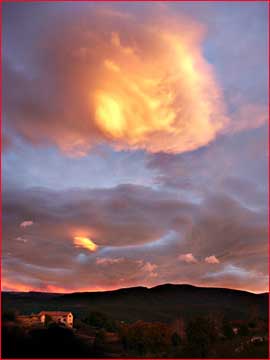
Pascal Jappy
Aubagne, France
Pascal.Jappy@Hummingbird.com
Picture Taken with a Minolta Dimage 7 at 28mm. 0"7 @F3.5 at 100ISO
I was visiting a building site in the country and hoping to take pictures, but when I arrived the sky was dull and overcast and it was night well before time. I almost packed it in, but as the sun set, it lit up some of the clouds from below and the reflected light turned the air orange. I rested the camera on a scaffold and bracketed 5 frames with the timer. For the record, the ‘mountain’ in the picture is the Sainte Beaume, very famous in Provence.
Michael’s Critique
Pascal has taken the clouds at sunset concept even further. The light hitting the building elevating it out of the dark foreground is the key to this very powerful and well executed image. The brightest part of the cloud is a bit too hot, but possibly could be toned down a bit in printing.
You can add your own comments on Pascal’s photograph on the Critique section of ourDiscussion Forum.
Clay E. Williams
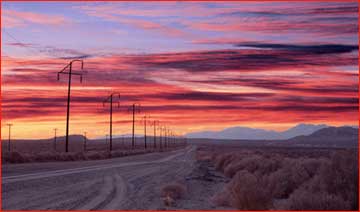
Clay E. Williams
Long Beach, California, USA
cew3jsm@mindspring.com
Mamiya 6 Camera
150 mm lens
Gitzo G126 Tripod
Medium size Novoflex Head
Film: Fuji Provia 400
Sky: 1/8 sec @ F22
Foreground: 1/2 sec at F22
This is a composite photograph. I used the process described on this web site to make separate exposures for the sky and foreground and then blend them together in Photoshop. My goal in creating this composite was to recreate the image I experienced without limitations imposed by my choice of media.
Location:
My wife and I were returning home after a short trip to Death Valley when this scene appeared before us. Old Highway 395 just seemed so small, and the telephone poles so solitary, I felt compelled to take this shot.
Michael’s Critique
Clay has carried off the composite very well. It was well worth the effort, because the combination of foreground, especially with the telephone poles, and sky, makes for an attractive composition.
This could have been achieved with the use of a split ND filter, but they way it’s been done shows how different tools can accomplish the same ends.
You can add your own comments on Clay’s photograph on the Critique section of ourDiscussion Forum.
Joerg Schwanke

Joerg Schwanke
Oldenburg / Germany
Joerg.Schwanke@touchmedia.de
www.panoramagalerie.de
Camera: Linhof Technorama 617 S
Film: Fuji Provia 100F
Le Mont St Michel is located on the north coast of France near the border of Brittany and Normandy. The small island with its old abbey is a very spectacular place with millions of visitors every year.
Michael’s Critique
One of the places on my "must see" list isMont St Michel. I’ve seen many photographs of it and know that I would greatly enjoy visiting and photographing it.
Joerg has managed to capture a winning combination of light and locale. He has also used the 3:1 aspect ratio very effectively. The only thing one could wish for would be a more dramatic sky.
You can add your own comments on Joerg’s photograph on the Critique section of ourDiscussion Forum.
All Photographs on This Page are the Copyright of Their Respective Photographers
All Rights are Reserved
You May Also Enjoy...
Luminous Landscape Endowment
11 March, 2008 In August 2007The Luminous Landscape Inc., created a fund designed to provide financial assistance to photographers to help finance worthwhile photographic projects.
How I Photographed Upper Antelope Canyon
Recently I paid my first visit to Upper Antelope Canyon in Page Arizona. I had wanted to visit here for several years before I got
